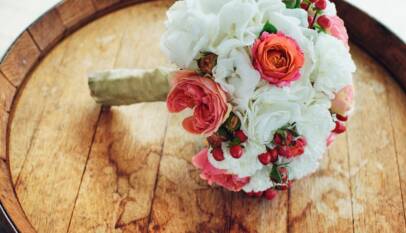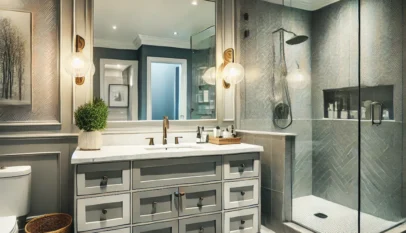
The Eucalyptus Plant Indoor trend is growing as more people embrace this striking, aromatic houseplant. Eucalyptus plants thrive indoors when provided with ample sunlight, well-draining soil, and moderate humidity, making them suitable for various indoor environments. Their unique foliage adds a touch of natural elegance, while their essential oils have calming effects.
In addition to aesthetic benefits, eucalyptus plants contribute to indoor air quality by absorbing toxins and releasing oxygen. Caring for them requires attention to watering habits and light exposure, ensuring they remain healthy and vibrant. With the right conditions, these plants can become a beautiful and functional addition to any home.
For those looking to enhance their living space with greenery, understanding how to cultivate eucalyptus indoors can elevate both decor and wellness. This guide will explore the essential care tips and benefits of keeping eucalyptus inside, making it an attractive option for plant enthusiasts.
Optimal Growing Conditions for Eucalyptus Indoors
Eucalyptus plants thrive indoors when provided with the right conditions. Key factors include lighting, temperature and humidity, watering, and soil composition. Each aspect plays a crucial role in ensuring the plant grows healthy and strong.
Proper Lighting
Eucalyptus requires bright, indirect light for optimal growth. A south or west-facing window is ideal. Direct sunlight can scorch the leaves, so it’s important to filter the light if needed.
- Artificial Lighting: In low-light conditions, consider using grow lights. Full-spectrum bulbs can supplement natural light effectively.
- Duration: Aim for 10-12 hours of light daily to maintain growth.
Regularly rotate the plant to ensure even exposure can help develop a balanced shape.
Ideal Temperature and Humidity
Eucalyptus prefers a temperature range of 65°F to 75°F (18°C to 24°C). Sudden temperature fluctuations can stress the plant.
- Minimum Temperature: It should not go below 45°F (7°C).
- Humidity Levels: Moderate humidity levels around 40-60% are best. Dry air can lead to leaf drop.
Using a humidifier or placing water trays near the plant can help maintain humidity. Avoid placing it near drafts or heating vents.
Watering Requirements
Eucalyptus needs well-draining soil to prevent root rot. Watering should be consistent but not excessive.
- Frequency: Water when the top inch of soil feels dry. This can vary based on indoor conditions and season.
- Watering Amount: Ensure thorough watering until it drains from the bottom. Empty any excess water from saucers to prevent soggy roots.
Adjust the watering frequency during the dormant season, as the plant requires less water.
Soil Composition and Drainage
Using the right soil mix is essential for the health of eucalyptus. A well-draining potting mix prevents water retention.
- Soil Mix: A combination of potting soil, perlite, and coarse sand works well. This ensures airflow to the roots.
- Pot Choice: Choose pots with drainage holes. This helps excess water escape and keeps roots healthy.
Repotting every couple of years will refresh the soil and promote healthy growth.
Maintenance and Health of Indoor Eucalyptus
Proper care and maintenance are crucial for ensuring the health of indoor eucalyptus plants. Key aspects include effective pruning, pest management, disease control, and repotting practices. Each element contributes to the vitality and longevity of the plant.
Pruning Techniques
Pruning indoor eucalyptus involves removing dead or damaged branches. This not only improves the plant’s appearance but promotes healthy growth. It’s best to prune in early spring, right before the growing season.
Use clean, sharp pruning shears to make precise cuts. Focus on thinning out dense areas to enhance air circulation. Aim to cut just above a node to encourage new growth. Regularly checking for leggy growth will help maintain a balanced shape.
Pest Prevention Strategies
Eucalyptus plants are prone to pests such as spider mites and aphids. Regular inspection ensures early detection. Maintaining adequate humidity levels can deter pests.
Using neem oil as a preventive measure can be effective. A diluted spray can be applied weekly as a protective barrier. Keeping the plant dust-free also boosts its overall health and attractiveness, making it less appealing to pests.
Disease Management
Indoor eucalyptus can suffer from diseases like root rot and powdery mildew. Ensuring well-draining soil and avoiding overwatering is key to preventing root rot.
In cases of powdery mildew, removing affected leaves may help. A diluted solution of baking soda and water can treat this condition effectively. Always ensure that the plant has good air circulation around it to minimize the risk of fungal diseases.
Repotting and Fertilization
Repotting is essential for maintaining soil health and providing adequate space for growth. This should occur every 1-2 years, preferably in spring.
Choosing a pot that is one size larger and ensures proper drainage is important. Utilizing a balanced, water-soluble fertilizer during the growing season encourages robust growth. Fertilize every four to six weeks to support the plant’s nutritional needs without over-fertilizing.
House for Sale at Mississauga: Top Listings and Market Insights
Many buyers are interested in finding a house for sale in Mississauga due to its diverse n…









